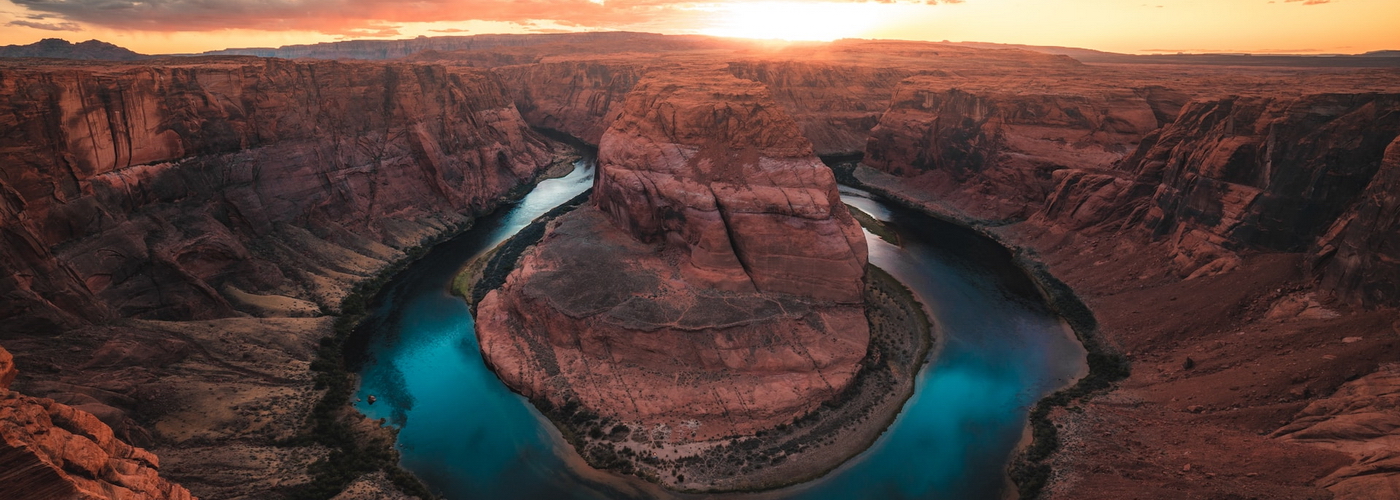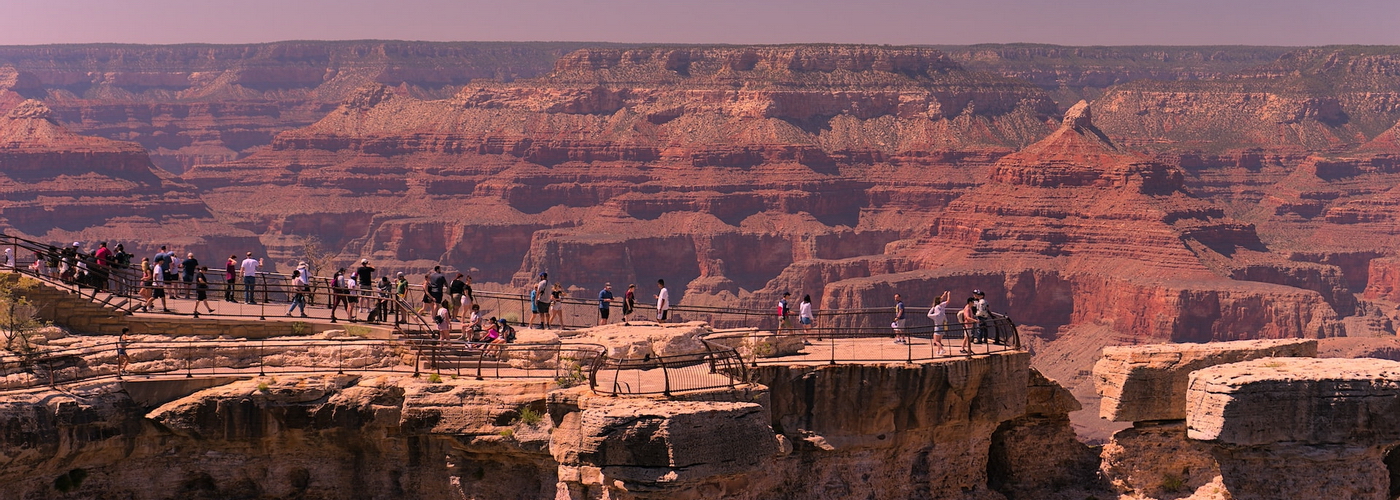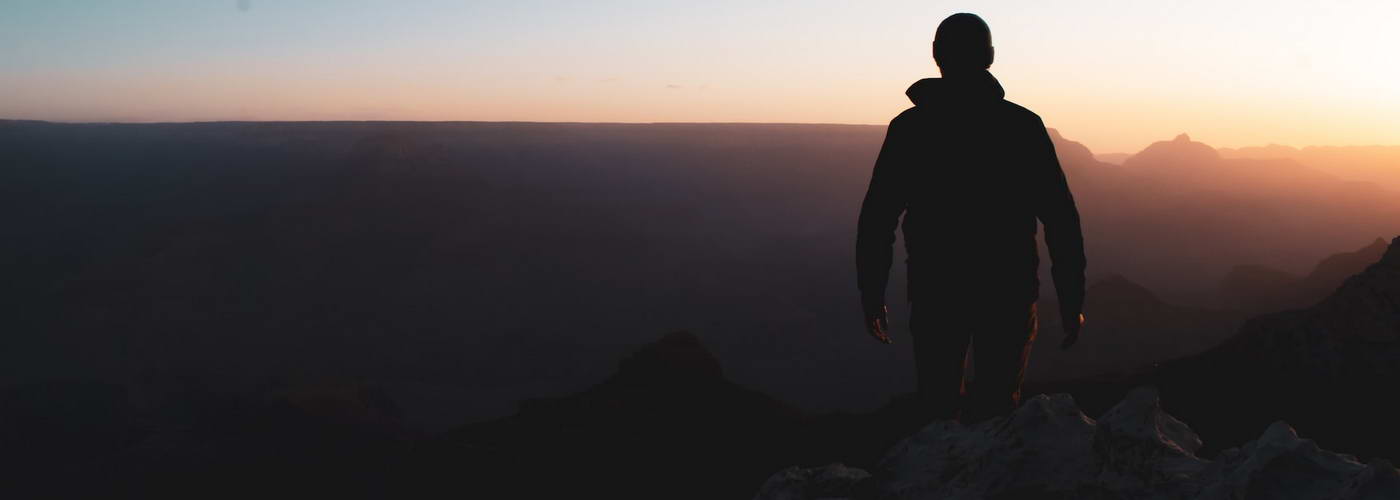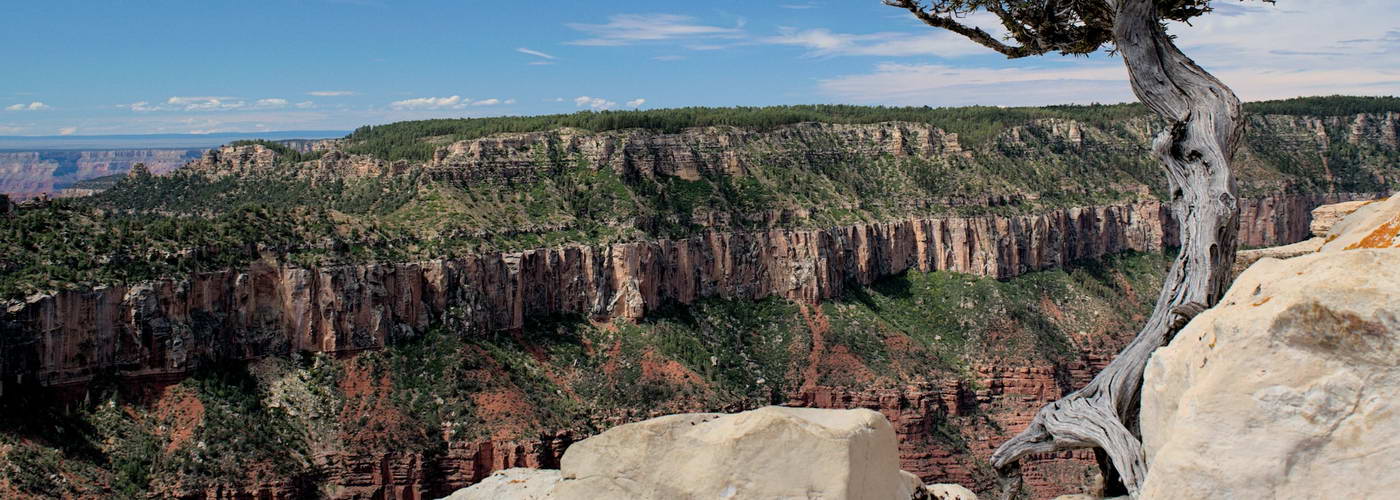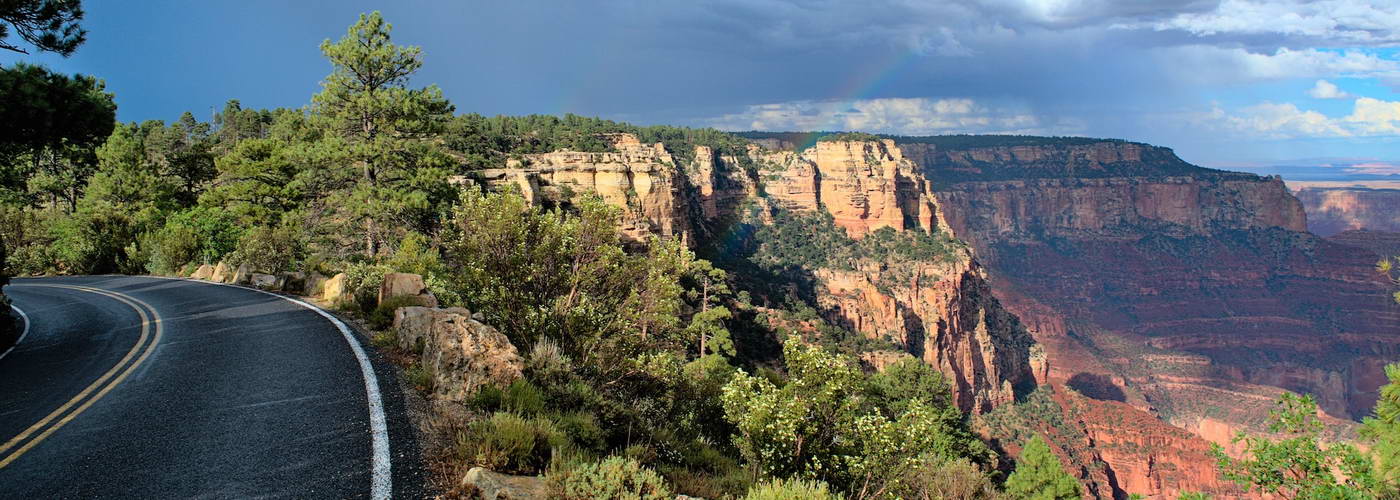Each year, millions of people come to the Grand Canyon; and they come for various reasons. For some, they come for the spectacular scenes and the refreshing hiking trails. Others enjoy the excitement of whitewater rafting on the rapids of the Grand Canyon. Many enjoy raft trips and helicopter rides.
No matter what attracts you to the Grand Canyon, you will agree time spent on this breathtaking land is often memorable for all who explore it. Unfortunately, this much tourism can take an unintentional toll on the delicate balance of the Canyon.
While it's often easy to ignore, the beauty of the Grand Canyon relies on an intricate and often delicate ecological balance. What are some ways our activities can affect the Grand Canyon? Why is it important to protect it, and more importantly, what can we do to ensure that we continue enjoying the beauty of the Grand Canyon for years to come?
Grand Canyon National Park- A World Heritage Site
UNESCO designated the Grand Canyon as a World Heritage Site in 1979. The organization usually grants this status to sites they consider to have a cultural and natural heritage of outstanding value to humanity. A quick geological survey of the Grand Canyon will show you why.
In a brief statement on its site, UNESCO describes the Grand Canyon as having one of the best ongoing geological spectacles. The international body also regards what the Grand Canyon tells about the earth's history as invaluable. Reports suggest that the gorges of the Grand Canyon happened about 6 million years ago during a period of geological upheaval. Exposed horizontal strata on the Grand Canyon retrace roughly 2 billion years of geological activity.
In addition, the park's diverse topography makes it home to an extraordinarily diverse ecosystem, flora, and fauna of a dizzying range of species spread across the many zones of the land.
As a heritage site, the Grand Canyon National Park becomes even more crucial, considering it is home to some dwindling and even endangered species. For example, the boreal forest is home to several rare or endangered animal and plant species.
Environmental Impact of Human Actions on the Grand Canyon National Park
The large volumes of human visitors to the Grand Canyon each year have had many environmental consequences on the park. This issue of Grand Canyon tourism has persisted despite the relentless efforts, programs, and laws enacted by the national park system. Here are some ways that Human actions have adversely affected the Grand Canyon:
Environmental Pollution
Light pollution is often an inevitable consequence of tourism. However, as more people visit the Grand Canyon National Park Service each year, the pollution problem is becoming concerning as visitors leave a long trail of waste materials.
For example, hikers who walk long stretches in the scorching Canyon heat get thirsty quickly and rehydrate by drinking lots of water. The problem is that most hikers use one-time bottles and often carelessly dispose of them in the wild.
Disposing of metabolic wastes is another issue. It is prevalent in camps where campers pass urine and fecal matter directly into the Colorado River. While many argue that the amount passed into the river isn't enough to cause an incident at any camp, it can't become too much with massive visitors.
Helicopter and train rides through the Grand Canyon also cause noise pollution. This noise level is a source of worry to park officials, who strongly feel that they could disrupt the activities of animal species on land.
Increased Erosion
Erosion is responsible for the brilliant gorges of the Grand Canyon. It was a geological process that took at least six million years to form. However, as tourism increases, so has erosion. This influx of visitors and erosion increase tend to change and denature the environment, rendering some areas of the Grand Canyon inaccessible.
Introduction of Non-Native Plant and Animal Species
As humans continue to visit the Grand Canyon, they may unwittingly introduce alien plant and animal species that soon out-compete the local flora and fauna of the Grand Canyon. An example is the Tamarisk plant, an invasive woody plant that found its way from the Glen Canyon Dam down to the heart of the Grand Canyon.
Before the construction of the dam, this plant struggled to strive. However, upheavals in the soil composition caused by the dam construction allowed this plant to spread rapidly across the Grand Canyon. Soon, it was crowding the local plant flora and limiting plant diversity. In addition to forcing out native plant species, the Tamarisk also increases fire risks, flood potential, and drought stress. Its only benefit seems to lie in the fact that it provides nestling for the SouthWest Willow Flycatcher, an endangered species.
The Damage Caused by Construction
The heated debate over Environment vs. Development has been raging for many years and seems to be going nowhere. However, no matter what side you're on, you'll no doubt agree that developers quickly sacrifice the environment when the wheels of development come spinning. The Grand Canyon has had its share of disruptive development projects. Here are some:
The Controversial Uranium Mining Projects
A region surrounding the Grand Canyon has many natural resources, including a significant uranium deposit which would reduce the United States Uranium imports. However, the war over whether the state parks and government should mine the ore or not rages on. Although some miners mine the ores outside the park boundaries, the government bans mining large parts of the ore because of their proximity to the Grand Canyon and the potential effect on the park.
While proponents of the ban insist that extensive mining would endanger the delicate balance of the National Park's ecology, opponents insist that mining the deposits would lead to clean energy production that will benefit the environment in the long run. The debate is unending.
Commercial, Tourist, and Residential Sites
As the Grand Canyon becomes increasingly popular, residential and tourist building construction has also increased. As the development of this site pushes closer and closer to the Grand Canyon's south rim, more people are worried about how much this level of construction will affect the fragile equilibrium of the site's ecosystem. While these might have a cumulative benefit for the local economies and labor income, it is still concerning.
The construction of Dams like the Glen Canyon Dam has already disrupted the National Park's ecosystem, allowing exotic species to infiltrate the Grand Canyon. Noise and Air pollution from nearby cities have also had negative implications. While it's true that tourism and corresponding development have contributed lots of money to the local economy and supported thousands of jobs, the Grand Canyon has often paid a significant price.
Several Issues That Would Affect Tourism in the Grand Canyon National Park in the Coming Years
Business and tourism continue to boom tremendously on the Grand Canyon and its environs. But as tourist companies and the hospitality industry continue to pay more attention to the area, many are rightly worried about the future of tourism on the Grand Canyon and what it would mean for its delicate ecosystem. Here are three issues that could affect the state of tourism in the Grand Canyon:
Rapid Rate of Construction
The Grand Canyon has witnessed several construction projects, most of which have sought to exploit its massive economic and tourist potential. Experts estimate that over 5 million people visit the Grand Canyon yearly and spend over 500 million dollars during their stay.
With such revenue at stake, it is no surprise that developers are clamoring for more infrastructure to accommodate this influx of tourists. Some massive projects like restaurants, hotels, gift shops, museums, and trailer parks are underway. Already, there is a proposal for an escalade project which will bring economic benefits and an additional 2,200 houses to the area.
While all this development means good business and more revenue for the tourist industry, many environmentalists are concerned about the impact on the ecosystem and the Grand Canyon's aesthetics. Some strong belief that flooding the Grand Canyon with a litter of little houses will damage the natural beauty of the heritage site.
The Strain on Pack Infrastructure
Another thing that'll plague the Grand Canyon National Park is its aging infrastructure. Most of these infrastructures are from the 1920s-30s. The problem is not just with the aging but the strain on it. Visitors have grown exponentially in nearly a hundred years between the 1930s and 2020s.
As of 2010, Park officials estimate that the National Park requires repairs and upgrades of $300 million; each year they put off this repair, the problem increases.
Park managers can use the money to build bridges, walkways, and hiking and cycling trails; that way, they improve the economic output of the Grand Canyon in the coming years. Water and sewage issues also plague the park and could lead to widespread pollution if not addressed.
Importance of Protecting and Conserving the Grand Canyon
When President Theodore Roosevelt declared the Grand Canyon as one of the country's national monuments in 1908, he implored that the people of America treat the park in a way that future generations could enjoy and appreciate. It strikes at the heart of conservation and sustainable tourism, which is crucial to a place that is also a UNESCO world heritage site.
With the massive amounts required to upgrade and repair the park, it is easy to ask if renovating it is worth the time, resources, and effort. Here are some reasons why preserving the Grand Canyon is crucial:
It is one of the World's Most Visually Powerful Landscapes
In its article outlining the criteria for selecting the Grand Canyon as a world heritage site, UNESCO describes it as one of the world's most visually powerful landscapes. It is a statement that ultimately fails to capture the intense beauty of the landscape.
The Grand Canyon has plunging depths, huge mystic caves, side canyons, temple-like buttes, and a multi-faceted topography. Its vast plain consists of flat plateaus, breathtaking waterfalls, and one of America's whitewater rivers.
Geological History and Ecological Processes
In addition to its majestic beauty, the Grand Canyon is famous for its striking geological Features. Early records show that the giant contours of the Grand Canyon come from years of erosion from the nearby Colorado River. The geological strata are exposed layer by layer from the basement Vishnu Schist to the capping Kaibab Limestone. The Grand Canyon has one of the most complete geological histories on the planet.
Ecological Refuge and Biological Diversity
The unique geological structure of the Grand Canyon and the diversity of biotic communities are other reasons to protect it. The Grand Canyon alone represents about five of the seven life zones in the National Park. While the entire park area is considered a semi-arid desert, its varying elevations have given birth to several distinct habitats. Here are just a few:
The Riparian Community
This habitat exists between the Colorado River and its perennial tributaries. It is a vast area that contains hanging gardens, seeps, and springs with rare plants. The Riparian Community is home to the Catclaw acacia and the troublesome Tamarisk plant.
The Desert Scrub Community
This habitat contains several warm climate species, such as the creosote bush, white bursae, and brittlebush. You will also find plants common to the American desert in this region.
The Ponderosa Pine Forest
The flora tends to change as the elevations go higher, between 6500-8200 feet. Plants found in this region are those that can typically withstand higher altitudes. The White Fir, Aspen, and Blue Spruce begin to dominate in this region.
Subalpine Grassland Community
This community is located above 8200 feet and is usually found only on the North Rim. Several types of grass dominate this area. Examples include the blue and black grama, big galleta, and Indian Rice grass. The wettest area supports sedges and forbs.
Threatened Species
The Grand Canyon is also home to several endangered animal species. This species plays a significant role in the Grand Canyon's ecosystem and should be protected.
Sadly, many of these species remain threatened despite the Grand Canyon being a world heritage site and a national treasure for over a hundred years. Air and noise pollution, disruption from rapid construction of dams and lodgings, fire suppression, and an overrun of invasive species have continued to strain how the local flora and fauna operate and even survive.
Some examples of endangered species that reside in the Grand Canyon include the Kaibab squirrel, the humpback chub, and the Kanab Ambersnail are just some examples of some endangered species in the park.
Rare Plant Species
The Grand Canyon is also home to over 1700 plant species excluding moss, lichens, and fungi. Some species are incredibly rare and could be lost if the Grand Canyon cannot sustain them. Some rare plants in the Grand Canyon include the Ponderosa Pine, the Agave Philipsiana, and the Sentry Milk-vetch are examples of such plants. Some of them have only recently been discovered.
How to Conserve and Tour the Grand Canyon National Parks Responsibly
We have already established the Grand Canyon's importance and why we must conserve it for the future. We have also seen the challenges the Grand Canyon faces. How can we responsibly tour the Grand Canyon? Here are some ways:
Adding Infrastructure with Conservation in Mind
As discussed earlier, the Grand Canyon is in desperate need of repair. Without this repair, it could disintegrate and become inaccessible for future generations. The government and the private sector need to throw in massive investments if the National Park is to be enjoyed by our children.
Trails, hiking routes, water sources, and campground amenities need upgrades. Spending on improved disposal and sewage systems will reduce the risk of pollution. These changes will not only improve the experience of tourists but also ensure that the park is not susceptible to land and water pollution.
Overall Management and Protection from the National Park Service
Park officials must enact laws and policies that encourage the sustainable use of the Grand Canyon while punishing abusive users. Most park managers have had to work with gateway communities, the government, and the public to ensure visitors get the best experience while preserving the park for the next generation.
They have enacted policies like the ban on drones, the provision of equitable use of facilities, and stringent laws to protect scenic and environmental values. Park managers can limit visits to specific parts of the park to protect it from being overrun by visitors. They can also restrict camping sites and hiking trails if this disturbs the ecological balance of the Canyon.
Education or Reorientation to Stop the Current Trend of Values
While most visitors are amazed at the beauty of the Grand Canyon, many visitors go to the Canyon with a careless attitude toward how much they must be impacting the site. Park officials rank litter of plastic bottles on hiking trails as one of their highest issues; others dispose of their metabolic waste directly into the Colorado River.
There are also issues with the Native American and Navajo native tribes and communities near the park.
If this unfortunate trend is to stop, then a research center with the sole purpose of churning out massive reorientation campaigns and interpretation programs, possibly at the beginning of each trip, must be launched. Tourists will be less likely to pollute the environment if they understand how much their actions impact the Grand Canyon.
Conclusion
Visiting the Grand Canyon is a life-changing experience; many love exploring the unique land. However, using the Grand Canyon responsibly has a cumulative benefit beyond money or any other economic benefit. The Grand Canyon is a national monument and a world heritage site; it holds crucial insights into geological processes.
While increasing tourism has benefited the country and local economies, national parks around the Canyon risk being ruined so that nothing will be left for future generations. Effective management, investment in infrastructure, and a massive educational campaign are ways to ensure sustainable use of the Canyon.
Contact Advantage Grand Canyon to book your next Grand Canyon rafting trip from any of the local top 15 outfitters! We offer them all.


